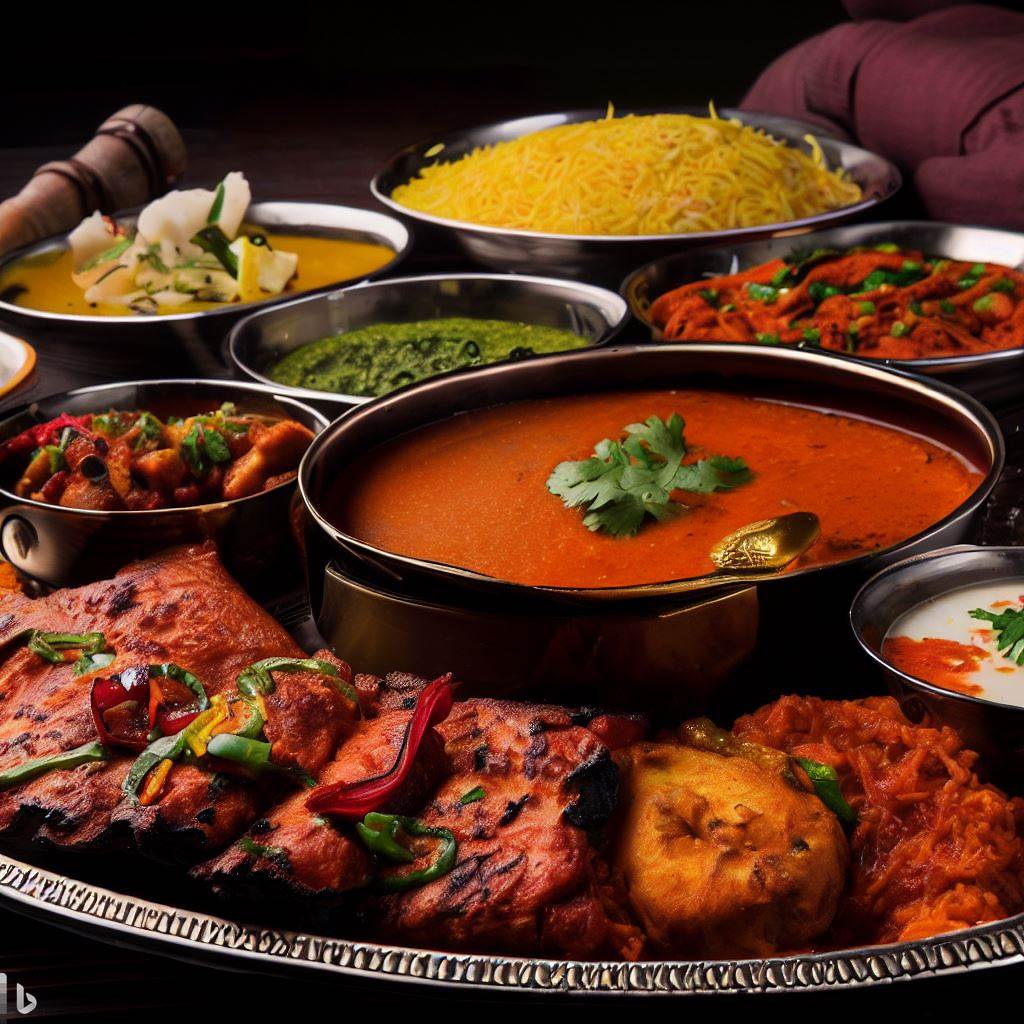Indian cuisine, with its rich tapestry of flavors, aromas, and vibrant colors, is a true embodiment of the country’s cultural diversity and culinary heritage. Spanning a vast geographical area and influenced by centuries of trade, migration, and invasions, Indian cuisine is a fusion of various regional cooking styles and ingredients that has evolved over thousands of years. From the fiery spices of the North to the coconut-infused dishes of the South, Indian cuisine offers a delightful gastronomic journey that captivates the taste buds of food enthusiasts worldwide.
Regional Diversity: A Gastronomic Kaleidoscope
India’s culinary landscape is as diverse as its languages, traditions, and landscapes. Each region boasts its unique dishes, ingredients, and cooking techniques, making it a gastronomic kaleidoscope for the curious food lover.
1. North Indian Cuisine:
North Indian cuisine is characterized by its bold use of spices and rich flavors. Hearty dishes like biryani, kebabs, and tandoori preparations (cooked in a clay oven) are the highlights of this region. Fragrant spices like cardamom, cumin, and cinnamon lend their allure to iconic dishes such as Butter Chicken, Rogan Josh, and Chole Bhature.
2. South Indian Cuisine:
In contrast to the North, South Indian cuisine showcases a lighter and more vegetarian-centric approach. The liberal use of coconut, curry leaves, and mustard seeds adds a distinct flavor profile to dishes like Dosa, Idli, and Sambar. The diversity of South Indian cuisine is also evident in coastal regions, where seafood plays a prominent role.
3. East Indian Cuisine:
The eastern region of India offers a delectable array of fish and rice-based dishes, influenced by its proximity to the Bay of Bengal. Mustard oil and panch phoron (a blend of five spices) are commonly used, adding a unique twist to dishes like Machher Jhol and Mishti Doi (sweet yogurt).
4. West Indian Cuisine:
The western states of India boast a mix of vegetarian and non-vegetarian delights. Gujarat is known for its mouthwatering thalis, while Maharashtra offers favorites like Vada Pav and Puran Poli. The influence of Portuguese and British colonial history can also be seen in dishes from Goa and Mumbai.
5. Northeast Indian Cuisine:
The northeastern states present an intriguing blend of tribal flavors and ingredients. Dishes like Naga pork curry and Assam’s Bhut Jolokia chili showcase the region’s love for spiciness. Fermented foods and bamboo shoots are also widely enjoyed.
The Magic of Spices:
One cannot discuss Indian cuisine without delving into the allure of spices. The use of various spices, either individually or in complex blends like garam masala, is what sets Indian food apart. Cumin, coriander, turmeric, cloves, and red chili are just a few of the myriad spices that lend depth and complexity to Indian dishes. The balance of these spices is an art mastered by Indian cooks over generations, and it continues to tantalize taste buds worldwide.
Innovative Street Food Culture:
Indian street food is a vibrant and integral part of the culinary experience. From the mouthwatering chaats like Pani Puri and Bhel Puri to the spicy Vada Pav and Kati Rolls, the streets of India offer an explosion of flavors. This street food culture not only caters to locals but also beckons adventurous travelers who wish to savor India’s culinary soul.
The Essence of Tradition and Family:
Indian cuisine goes beyond being just food; it embodies a sense of tradition, family, and togetherness. Meals are often a communal affair, and traditional cooking methods are passed down through generations. Festivals and celebrations are incomplete without elaborate feasts, where age-old recipes are recreated with love and care.
A Global Impact:
Indian cuisine’s global influence has steadily grown, finding appreciation in kitchens around the world. Restaurants serving Indian food are ubiquitous in many countries, adapting recipes to suit local tastes while retaining the essence of Indian flavors.
Health Benefits:
Beyond its delightful taste, Indian cuisine also offers several health benefits. The incorporation of various spices and herbs is believed to have medicinal properties. Turmeric, for instance, contains curcumin, a compound known for its anti-inflammatory properties, while spices like fenugreek and cumin aid in digestion.
The Future of Indian Cuisine:
As Indian cuisine continues to evolve, it faces new challenges and opportunities. Modern chefs are experimenting with fusion cuisine, blending traditional Indian flavors with international cooking techniques. Additionally, there is a growing emphasis on healthy and sustainable cooking practices, promoting the use of locally sourced ingredients and traditional cooking methods.
In conclusion, Indian cuisine is a celebration of diversity, tradition, and culinary ingenuity. Its profound impact on the global culinary scene reflects the universal love for its flavors. Whether enjoyed in the bustling streets of Mumbai, the serene backwaters of Kerala, or the cozy restaurants of London or New York, Indian cuisine remains a tantalizing journey through a world of flavors.




